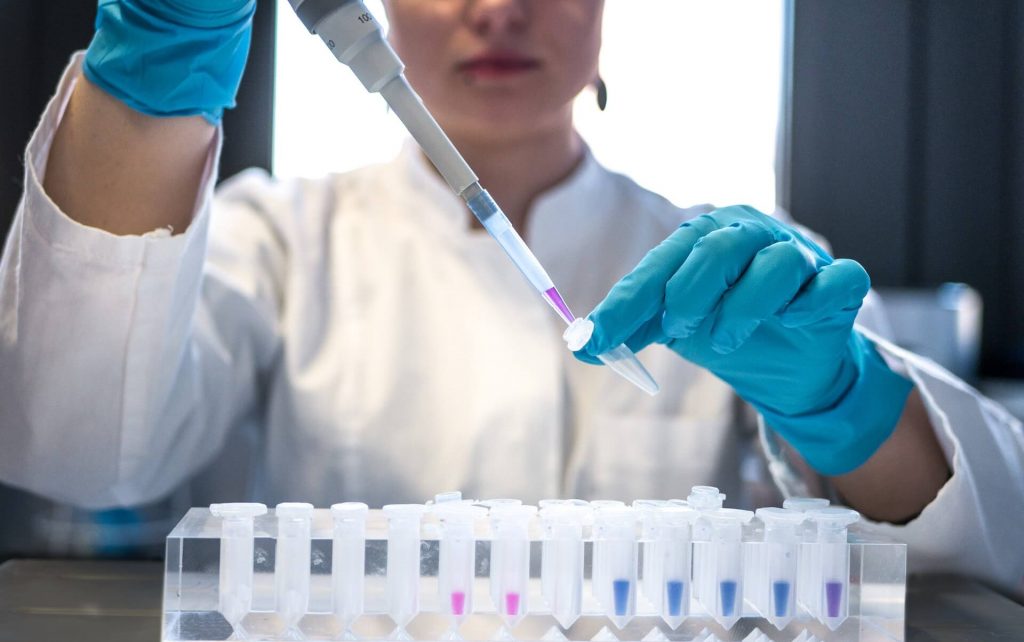The infrastructure for creating virtual reality(VR) experiences has been around for some time. However, its primary applications have been for fun and games. That said, the technology has progressed to the point where you can use it in more realistic settings. That has made it possible to use VR for educational and training purposes. VR has recently become more popular for use in laboratory education. For example, since you can use it to create simulated environments that present scenarios that cannot be easily replicated in the real world, it can help students to better understand how specific processes work and how they should be carried out. With that in mind, we will discuss how virtual reality can be used in lab training.
What Is Virtual Reality?
Virtual reality generates a fully digital setting and presents the viewer with it so that they feel as if they are there. Depending on the virtual world’s detail, it’s possible to experience realistic visuals and the accompanying sounds. The versatility of virtual reality makes it an obvious choice for training purposes of all kinds. When a user dons a virtual reality headset, he goes into a whole 3D world that looks like the items inside it have a spatial presence. Additionally, the user’s environment is rendered as if it were in motion and changing. The user may interact with the environment’s objects in the same way as if they were in the room physically.
Virtual reality is one of the most exciting innovations in the field of technology in recent times. It has revolutionized how we interact with computers and other electronic devices. Furthermore, it has given way to the creation of some truly unforgettable experiences. With that in mind, we need to mention that virtual reality technology is just now emerging from its infancy. This means that there are some limitations to the technology. But it also means that there are many exciting opportunities to explore in the future.
Different Ways of Using VR for Training
Using VR to enhance your education goes well beyond what you can do in a traditional classroom or online learning environment. According to experts from convertmore.com, 42.9% of Internet users will try virtual reality at least once in the next year. Furthermore, 68.7% will try augmented reality (AR) at least once a month. This popularity is because your teams may bond over a common experience, and students can explore hypothetical scenarios with realistic consequences. Not only that, but everyone benefits from having a secure environment to hone their technical and practical skills. Application examples for virtual reality in training:
- Technical Training – Using an interactive experience to train workers on correctly assembling complex equipment or items. Trainees can move around the scene using handheld controllers, allowing them to interact with virtual objects and buttons.
- Scenario-Based Training– Using scenarios that depict different high-stakes situations, trainees can learn how to work under pressure. This training can develop a nuanced understanding of a stressful circumstance and practice making essential choices.
- Multi-Step Task training – This VR training can make any multi-step process easier to understand.
Virtual reality can also be used in lab training using these three methods. You only need to find the model that will fit your lab environment.
What Are the Different Uses of VR in Lab Training?
Whether or not you should use virtual reality for laboratory training is a function of the specific goals. Simply presenting students with various scenarios and allowing them to interact with them in a virtual environment is one possible use. However, you might also want to develop more complex simulations in which numerous variables interact. That is to say, before beginning implementation, you must consider each application’s specific needs.
How Can VR Help To Improve Lab Training?
Virtual reality can be used in lab training due to its many potential benefits for education. For starters, it aids in building an immersive setting that makes students feel like they are a part of the simulation. Students can try out new abilities with greater self-assurance when they can do so in a risk-free and supervised setting. They’ll be able to absorb more information and gain a deeper understanding of the material this way. Virtual reality can also help you present information more interestingly and memorably. That is especially helpful when trying to explain something complex to the students or demonstrating something they have never seen before in a way they cannot replicate. As a result, they will have a more solid grasp of the material and be better prepared to put it into practice when they return to class.
What Are Some of the Limitations of Using VR for Lab Training?
However, there are also some caveats to using VR for training, as there are with any technology. The devices are relatively costly and call for a sizeable initial cash outlay. That can be a barrier to entry for smaller institutions that lack the funds to invest in the necessary infrastructure. In addition, the equipment is large and cumbersome, so it can be challenging to maneuver around the rooms where you have installed it. That can be a nuisance for the users and make their use less than ideal. And lastly, it may not be practical to require students to regularly bring such devices into the classroom if they are not available.
Conclusion
Now that we have covered how virtual reality can be used in lab training, it’s time to explore how to implement it in your lab. Each laboratory will have unique procedures for developing a virtual reality scenario for training. That’s why it’s best to first decide which elements you want to incorporate and then design a setting that supports them. That will take some time, but in the end, it will help your students learn more effectively by allowing them to put their knowledge into practice.


